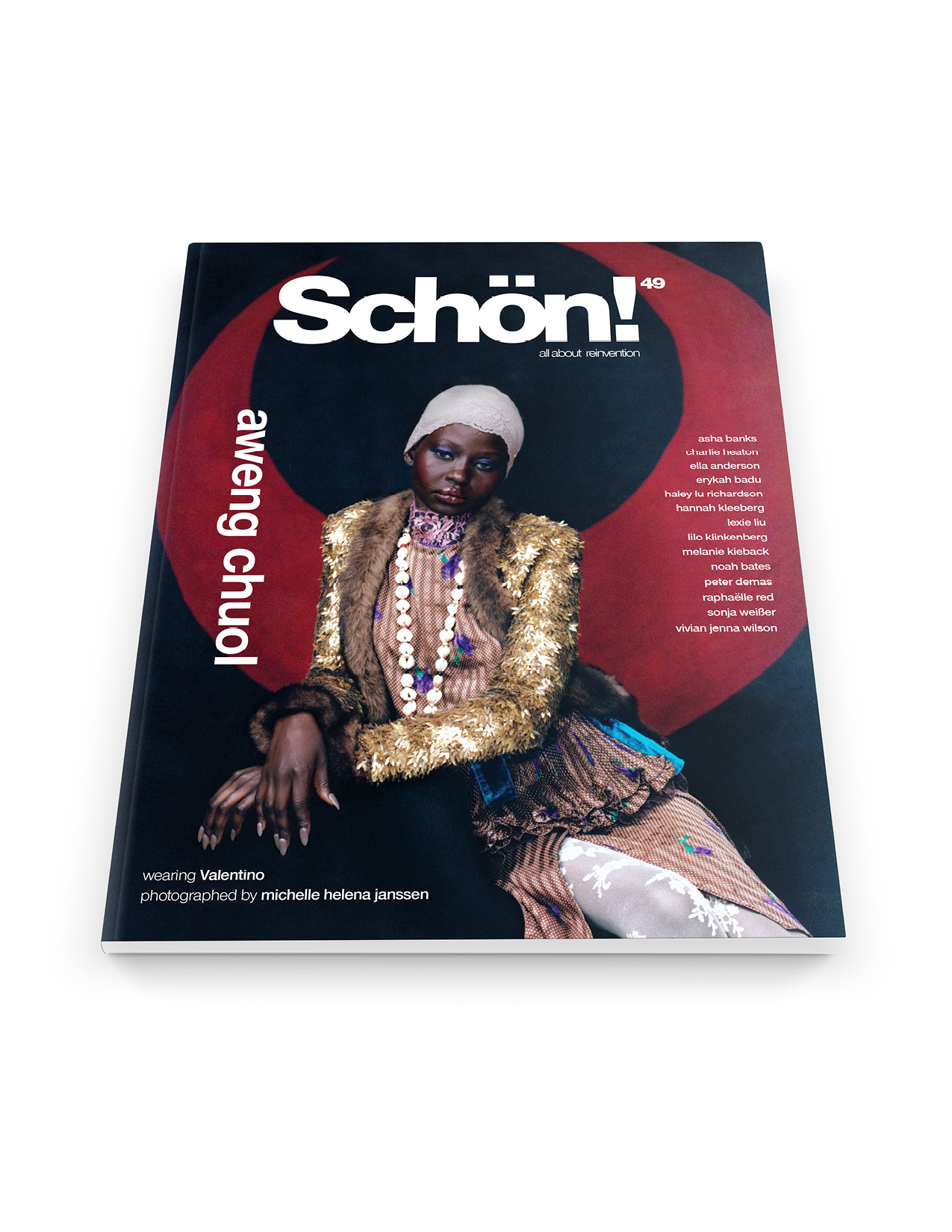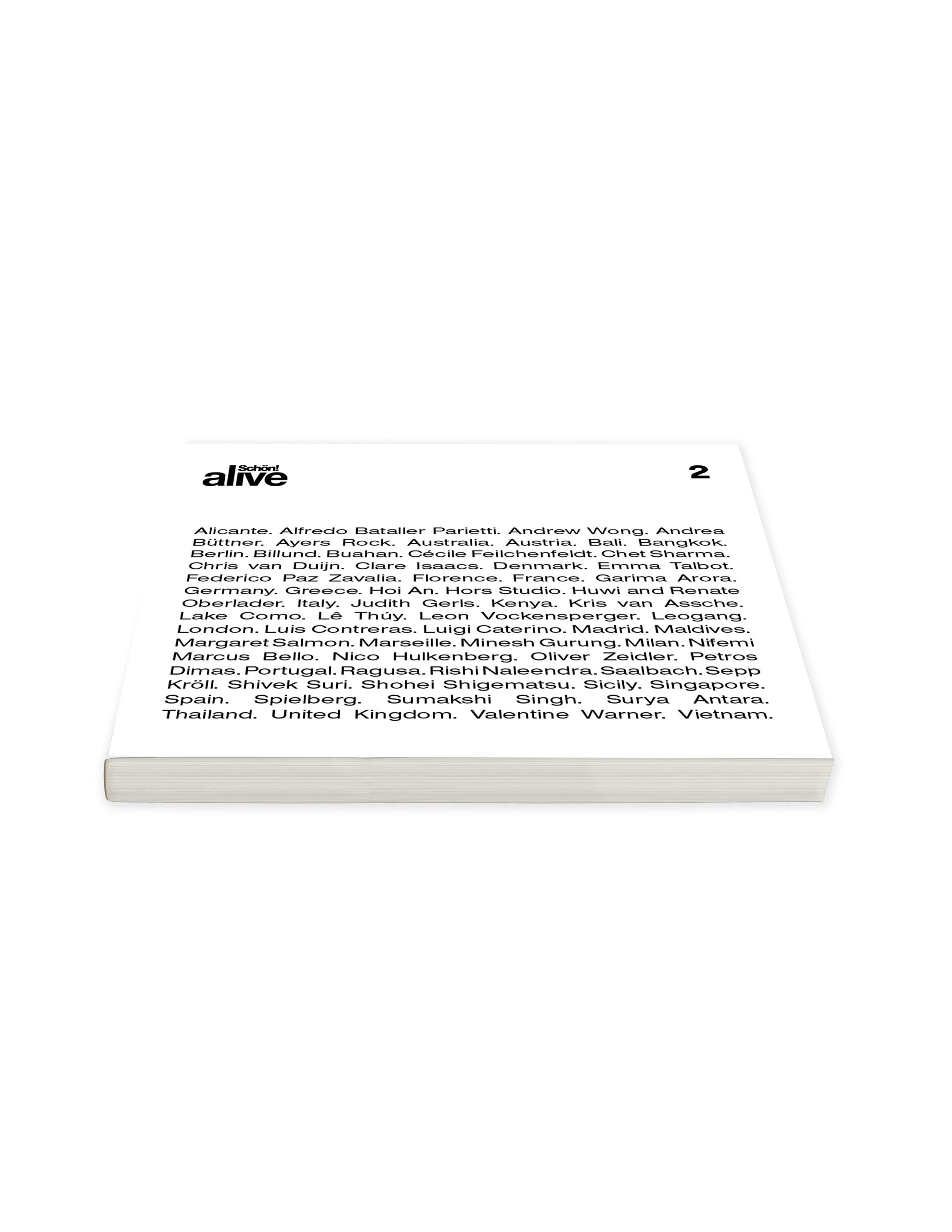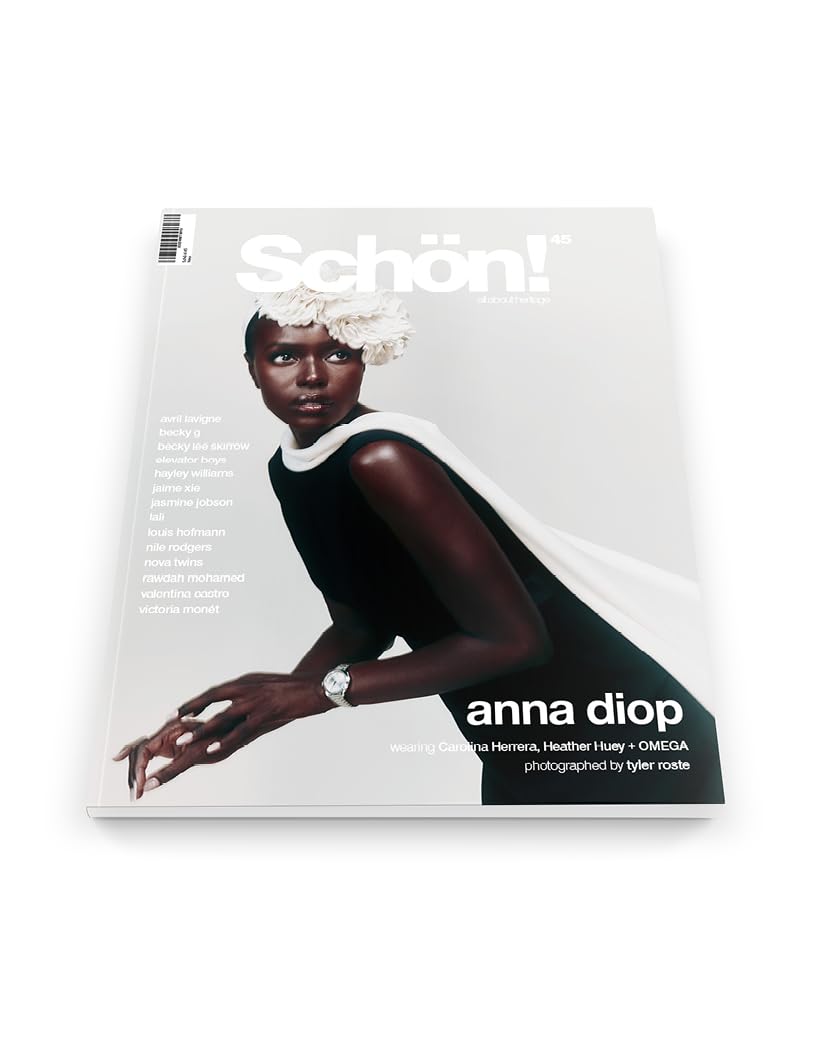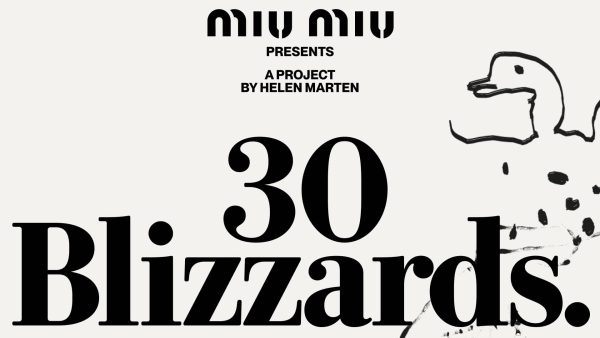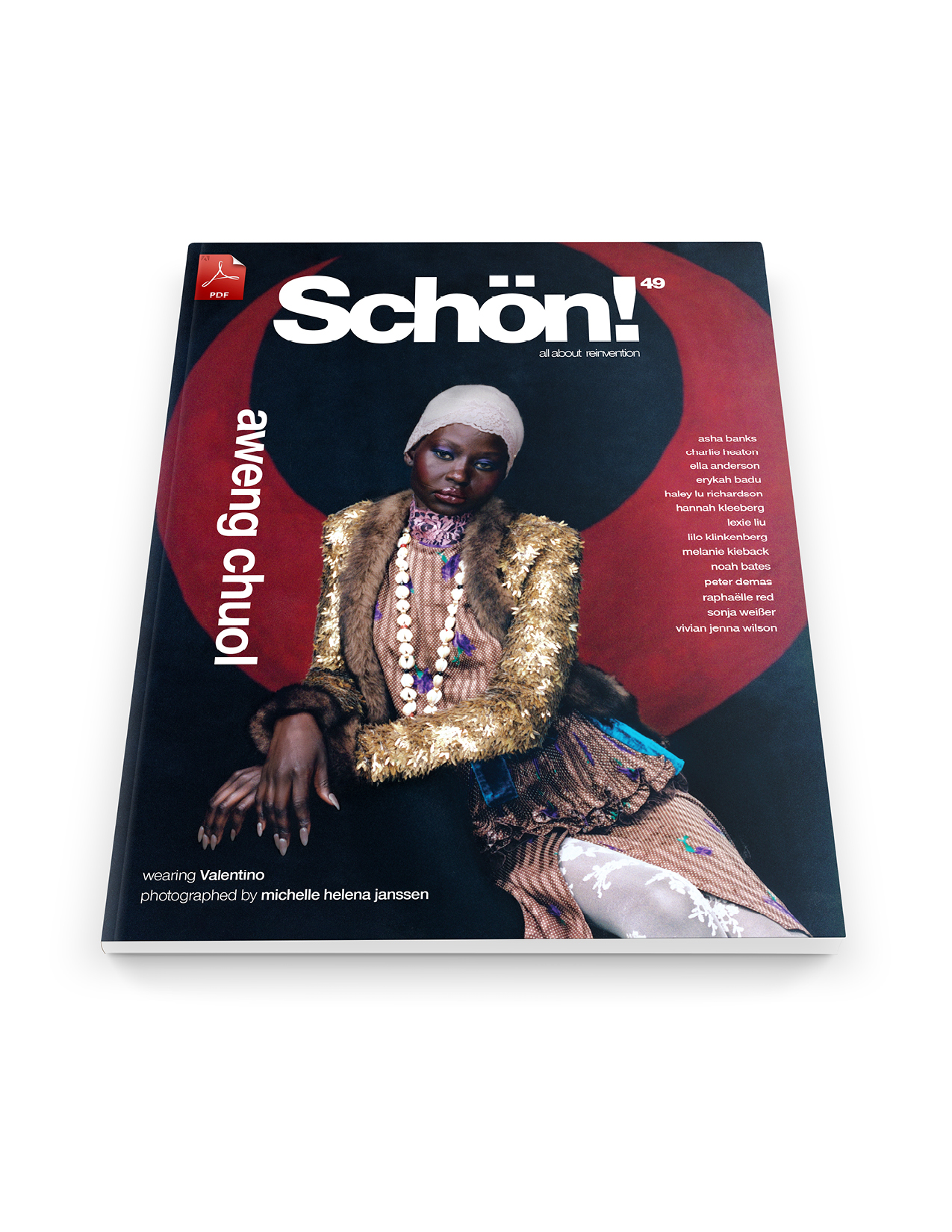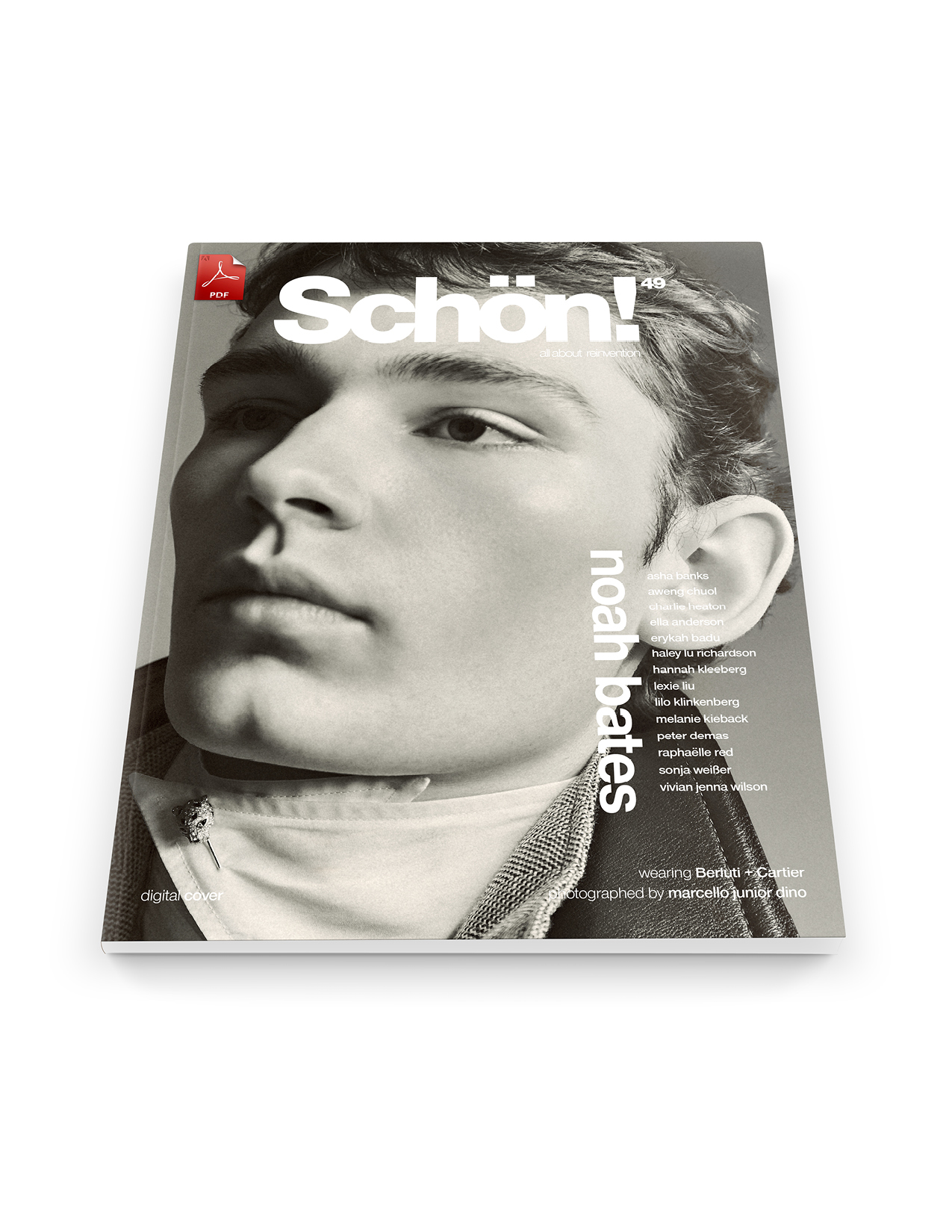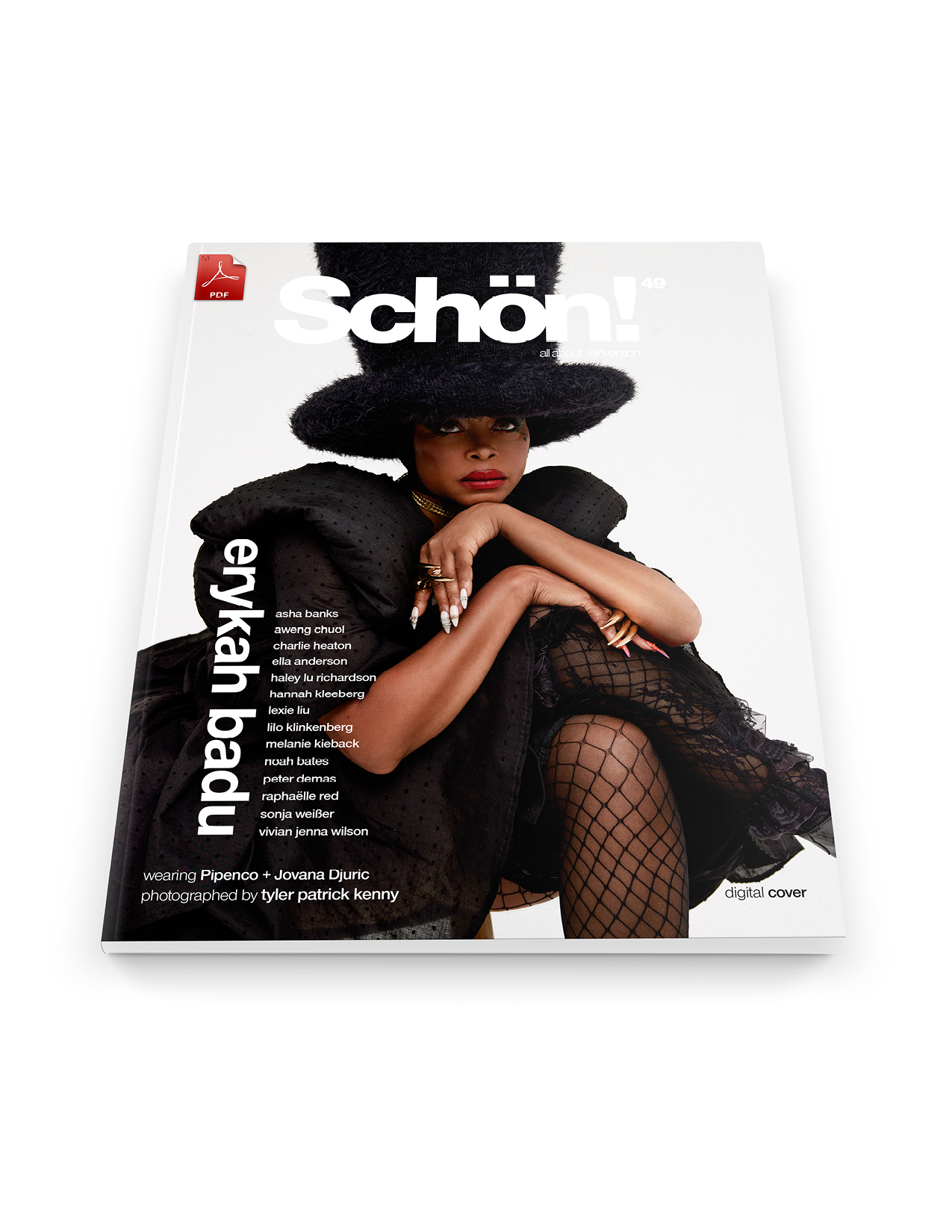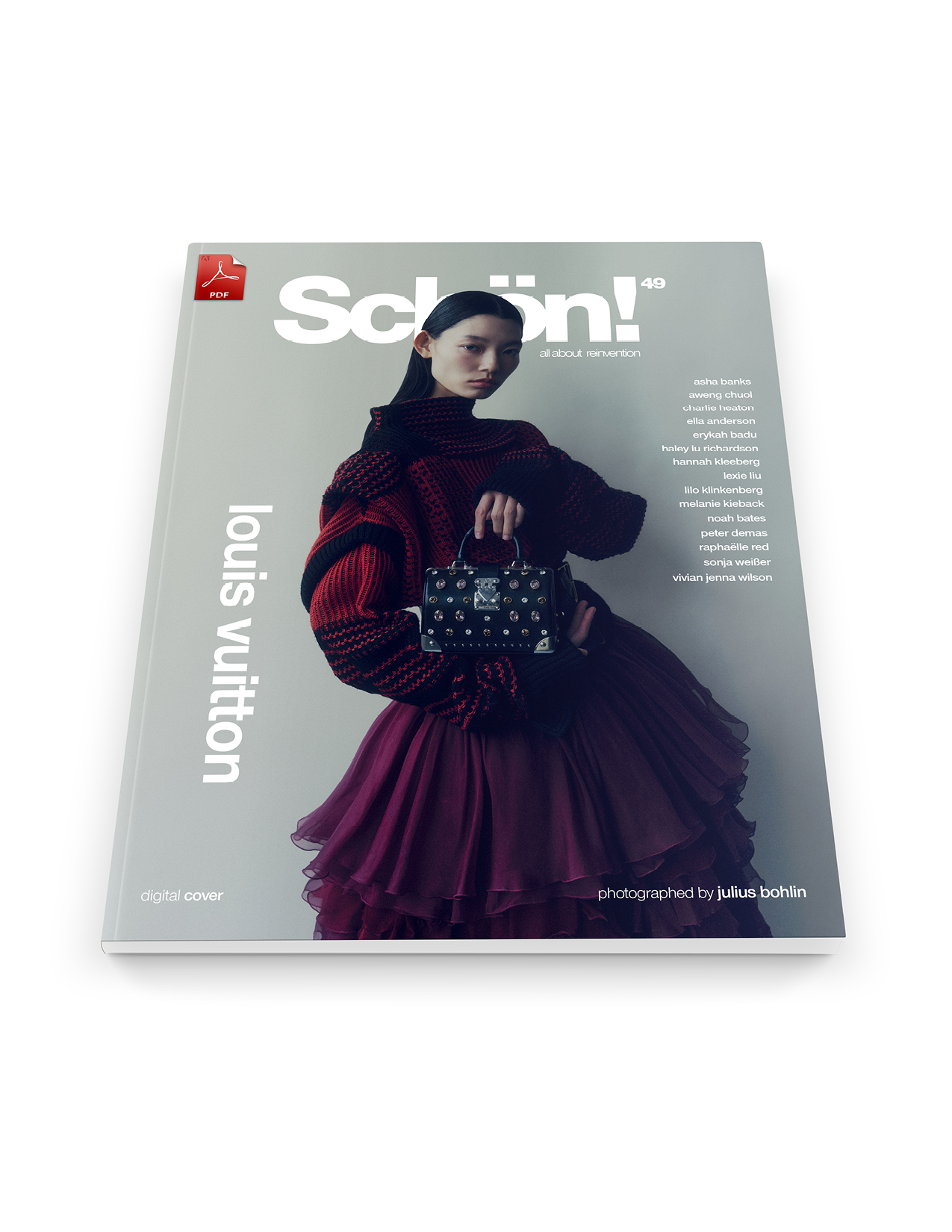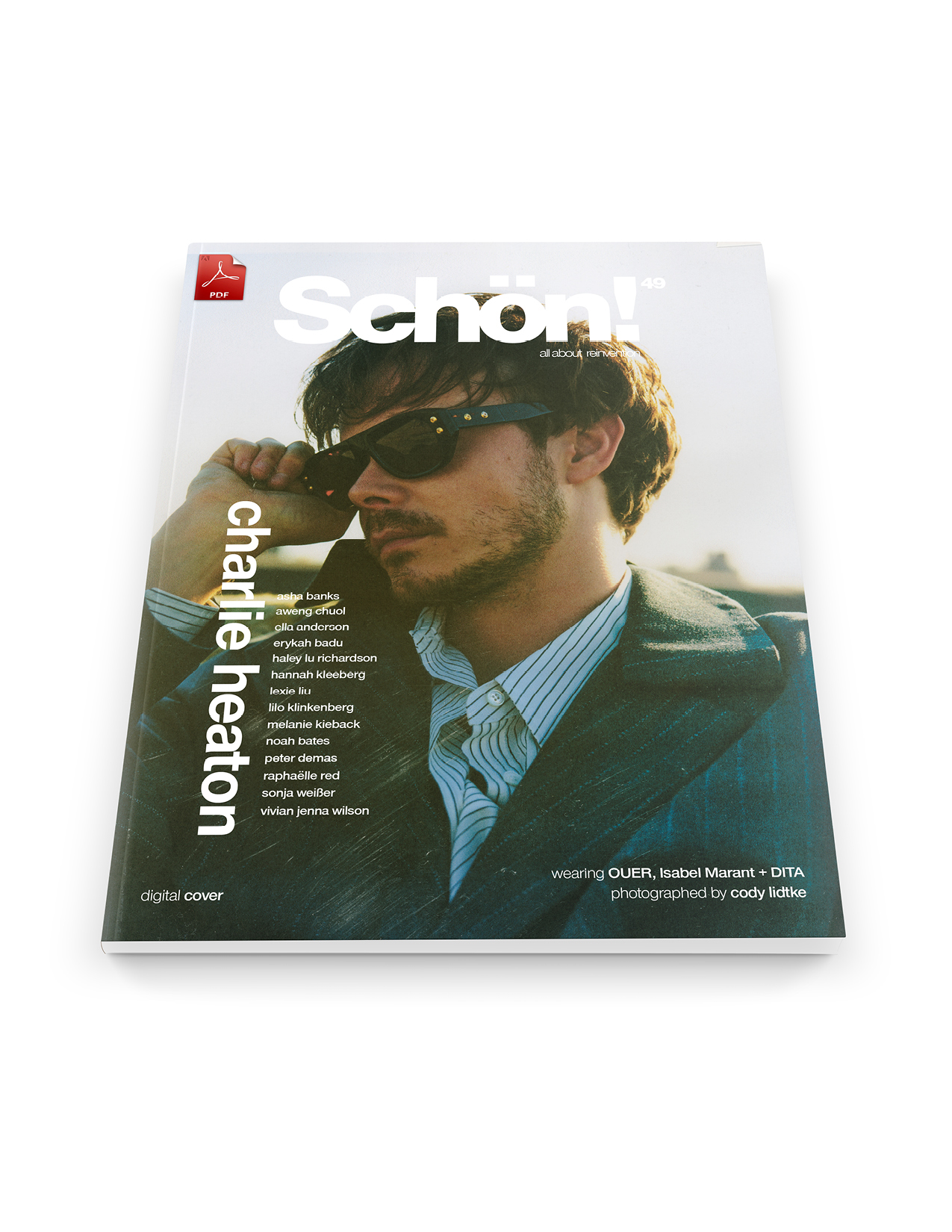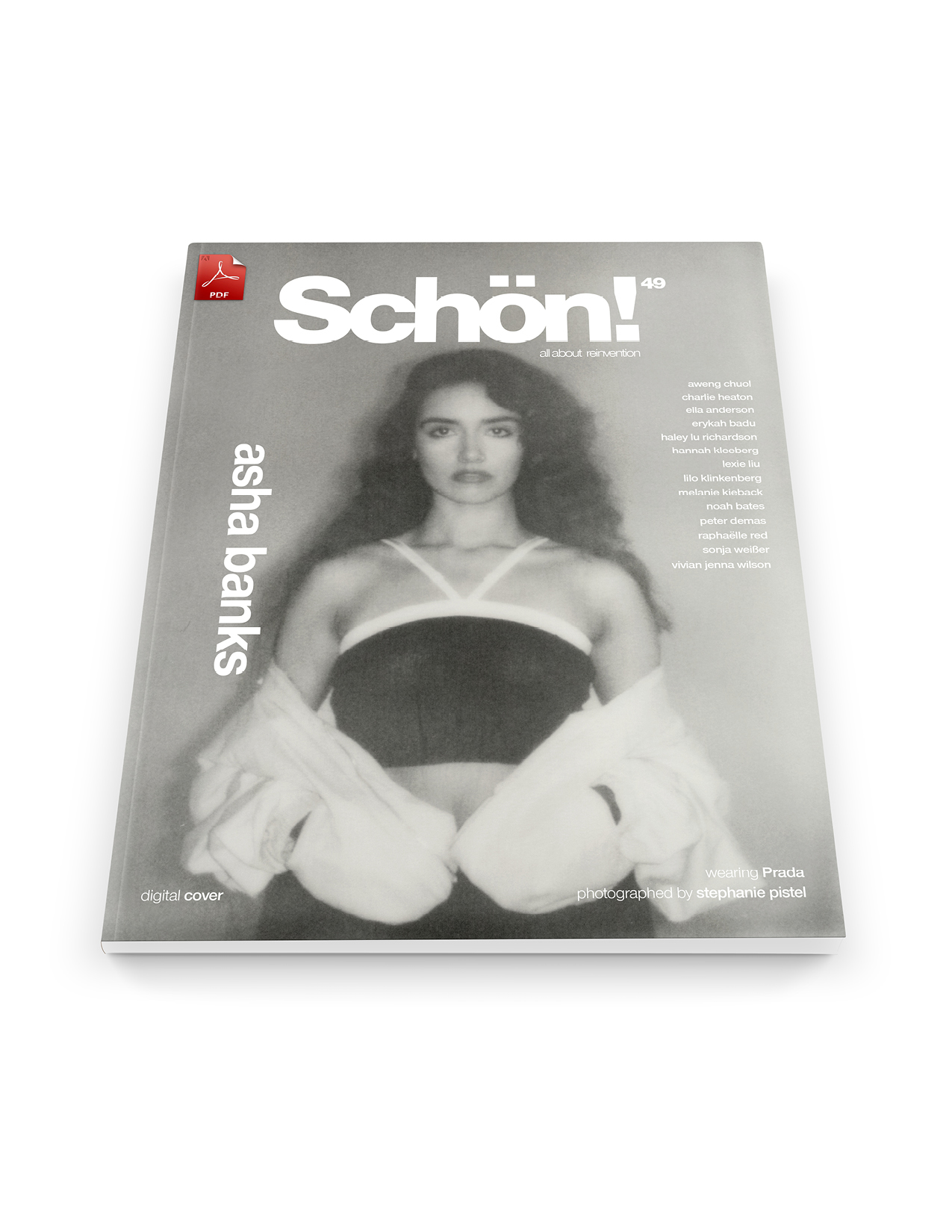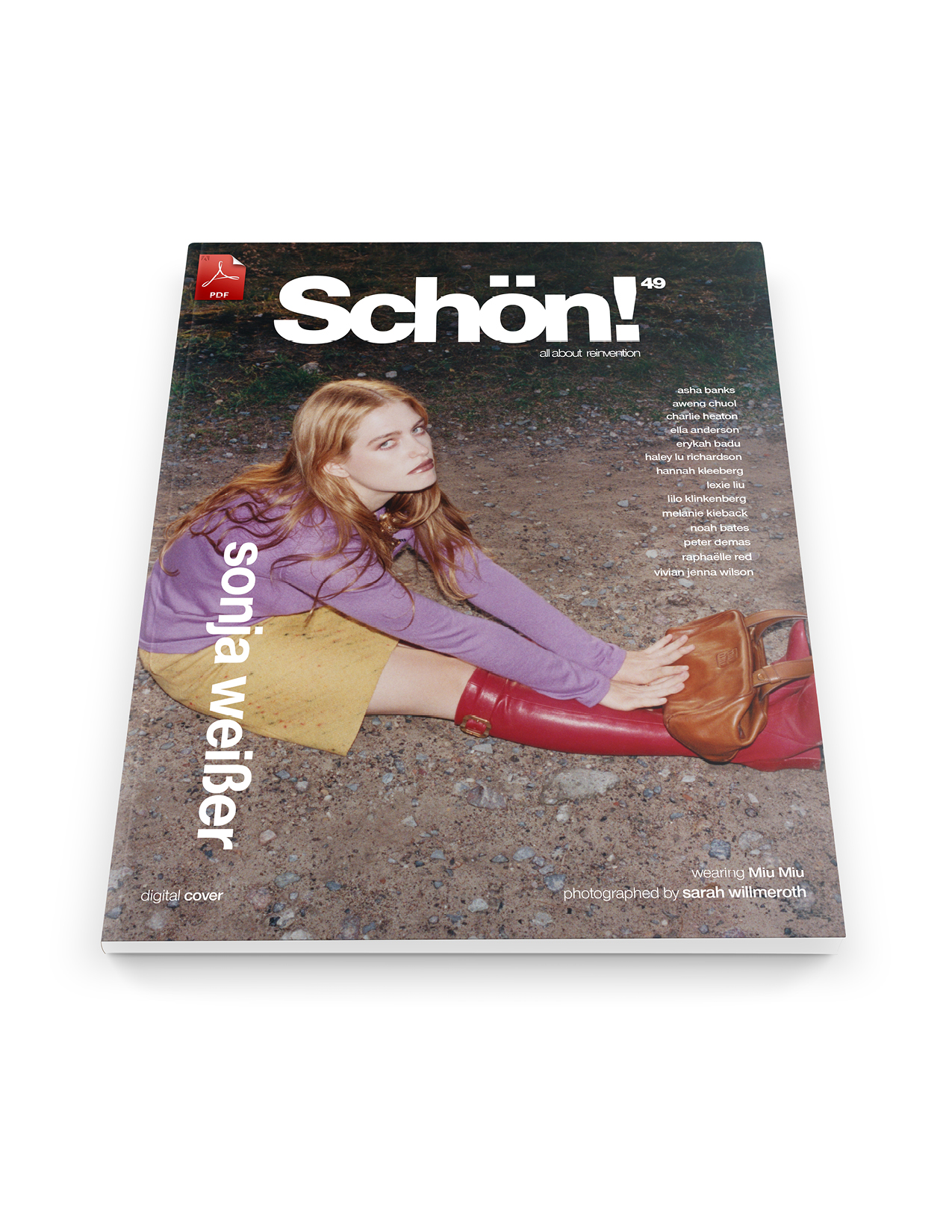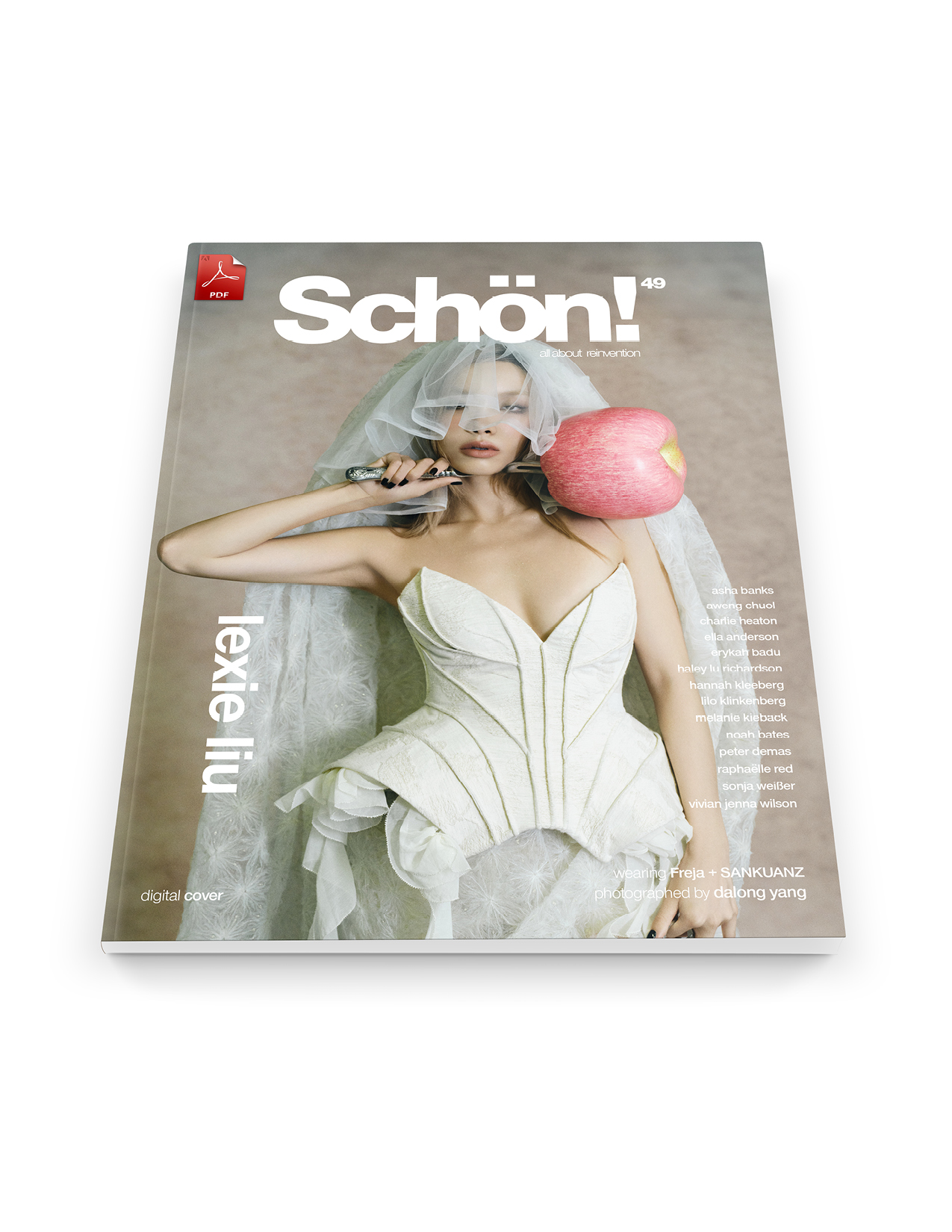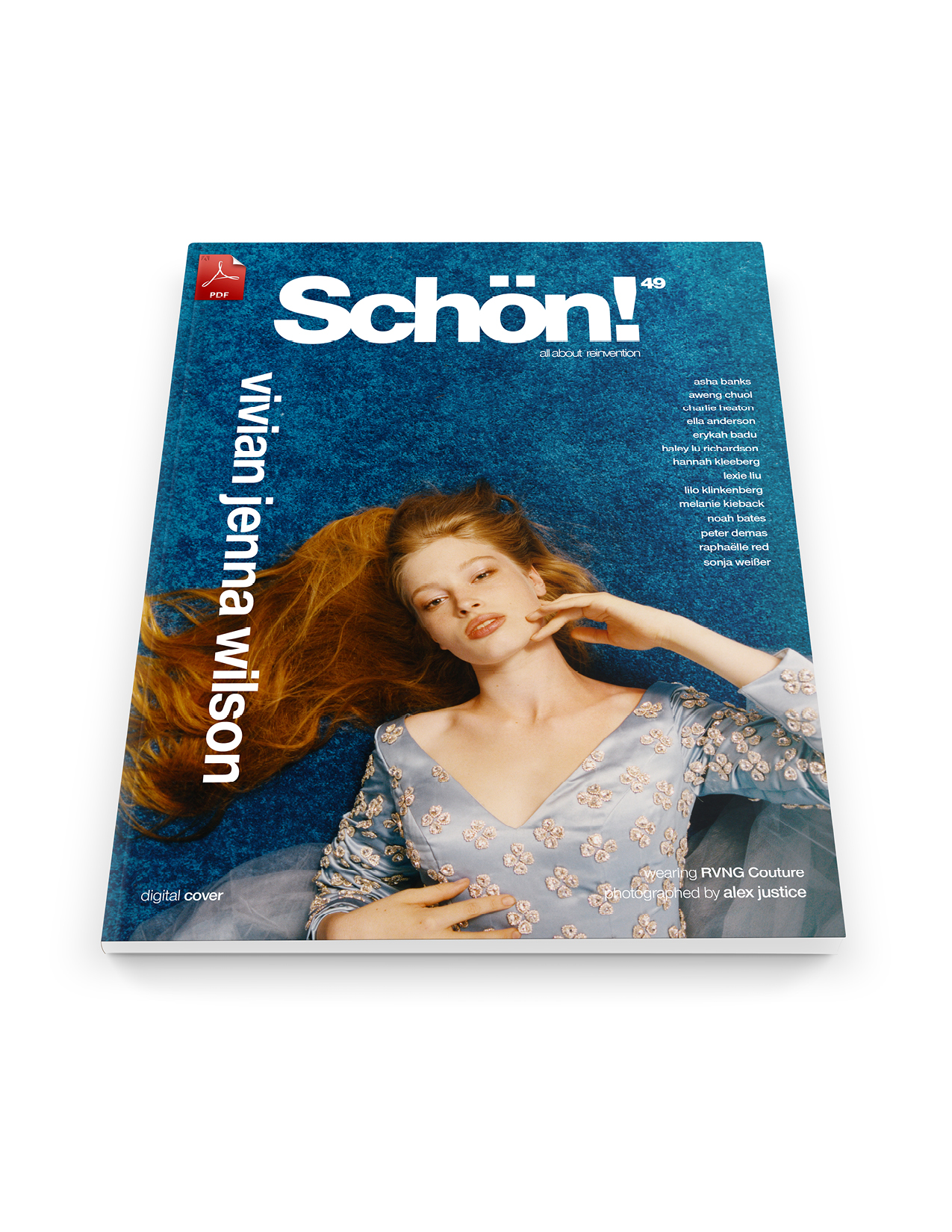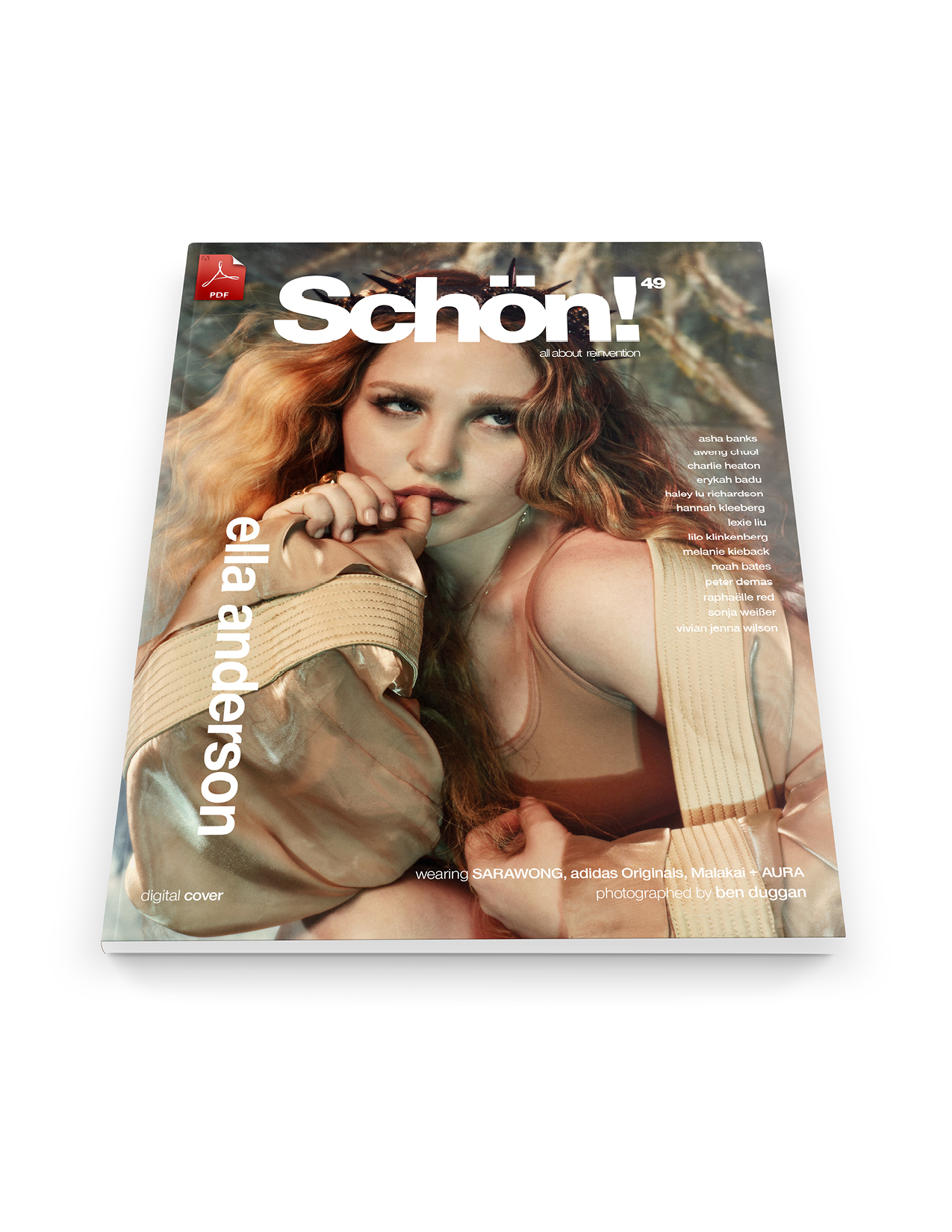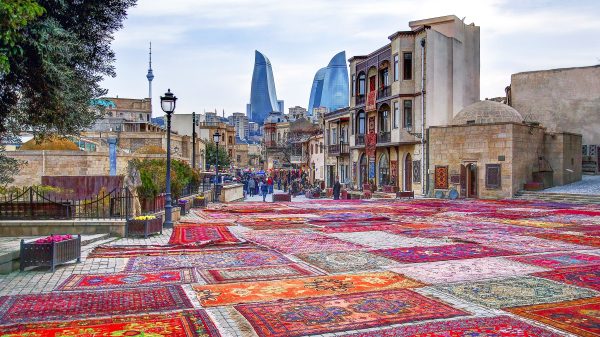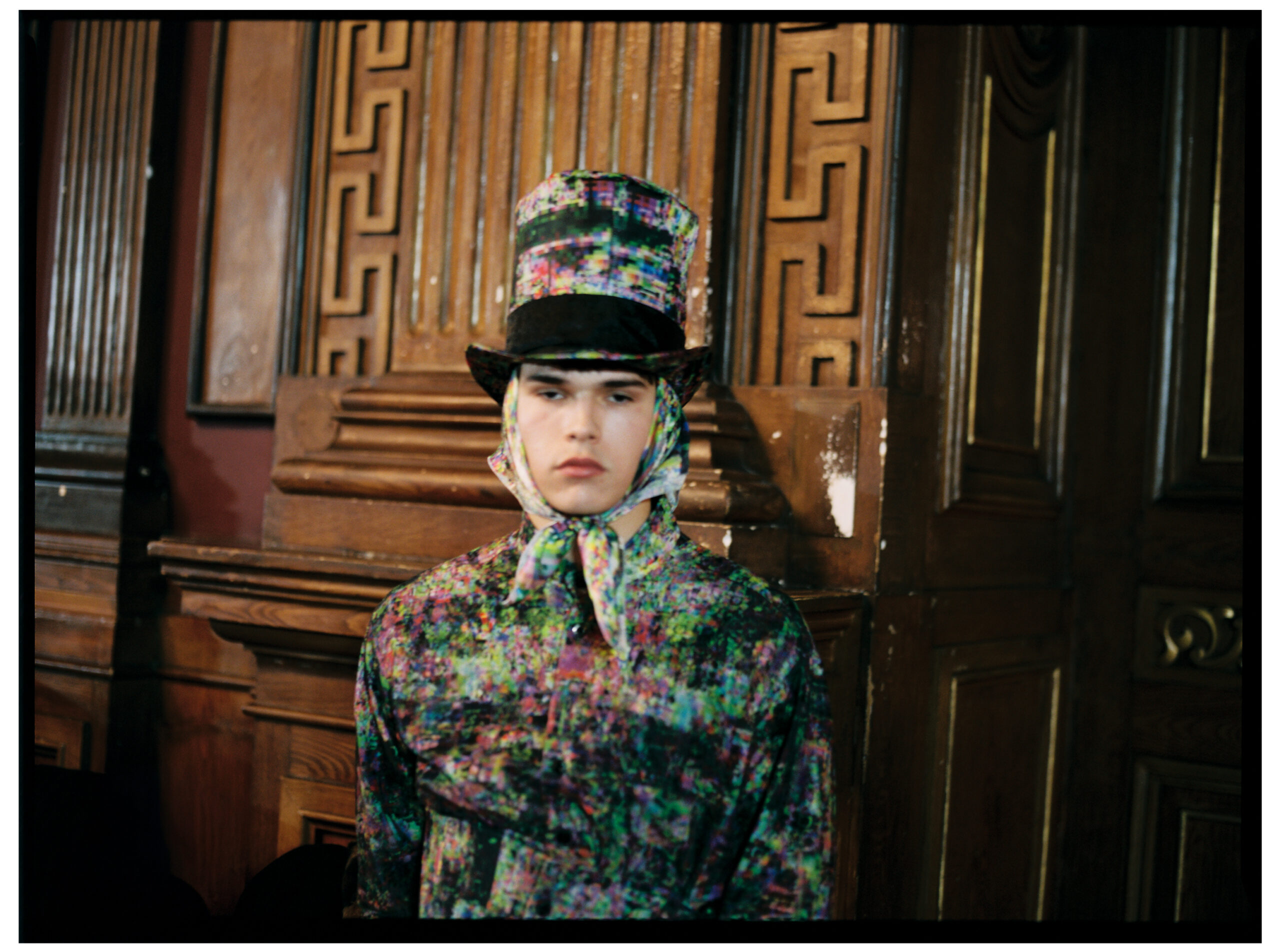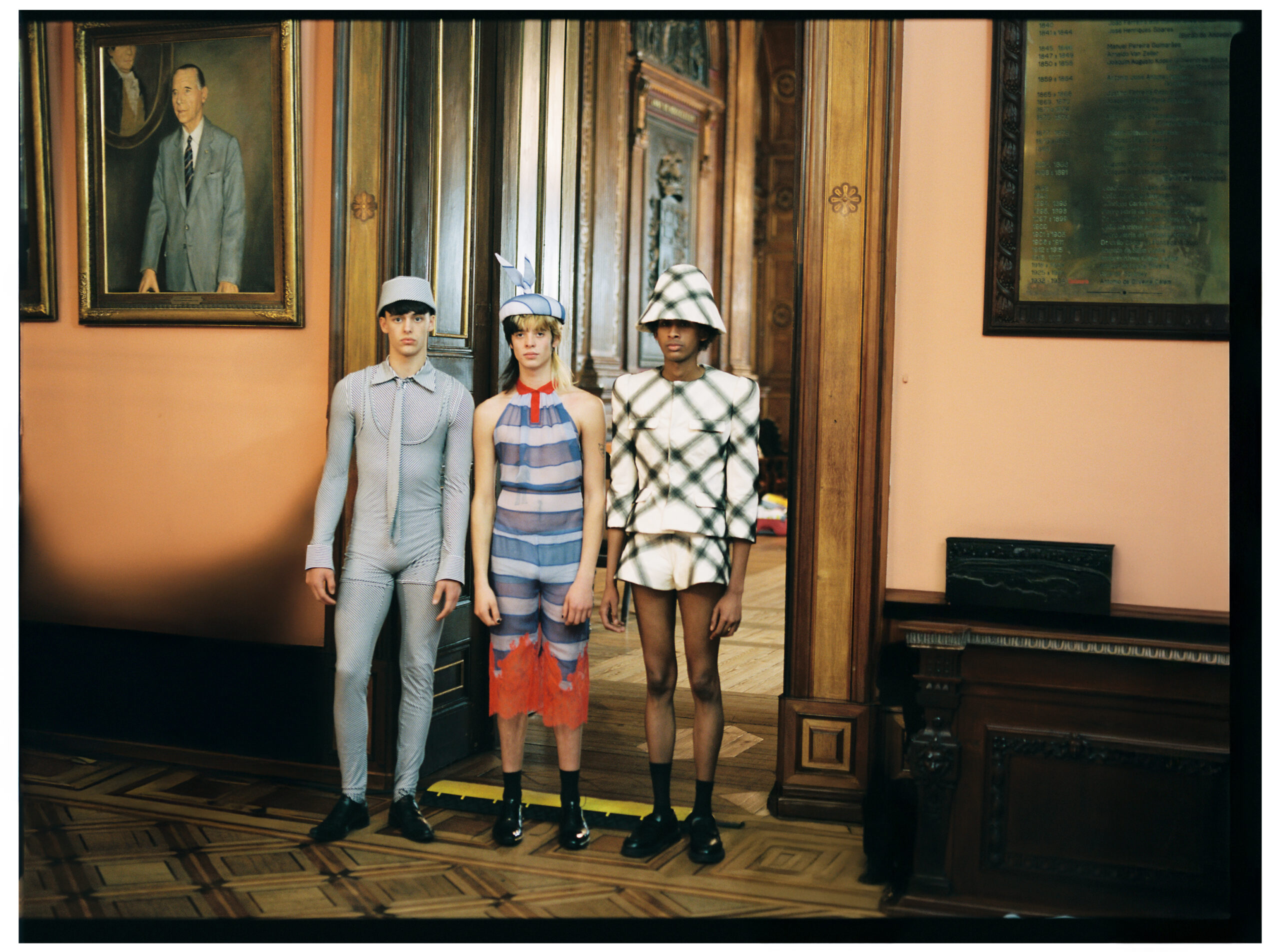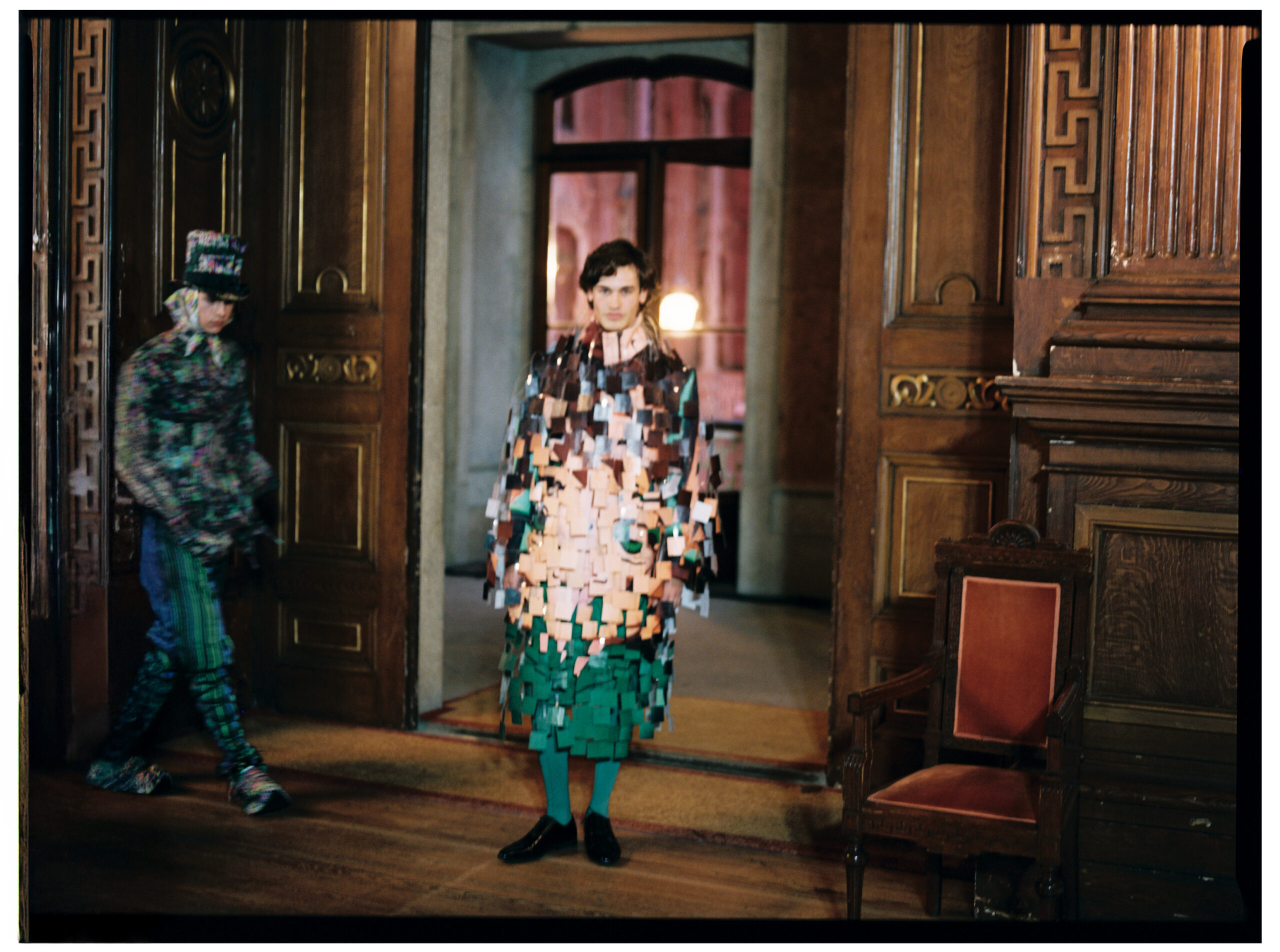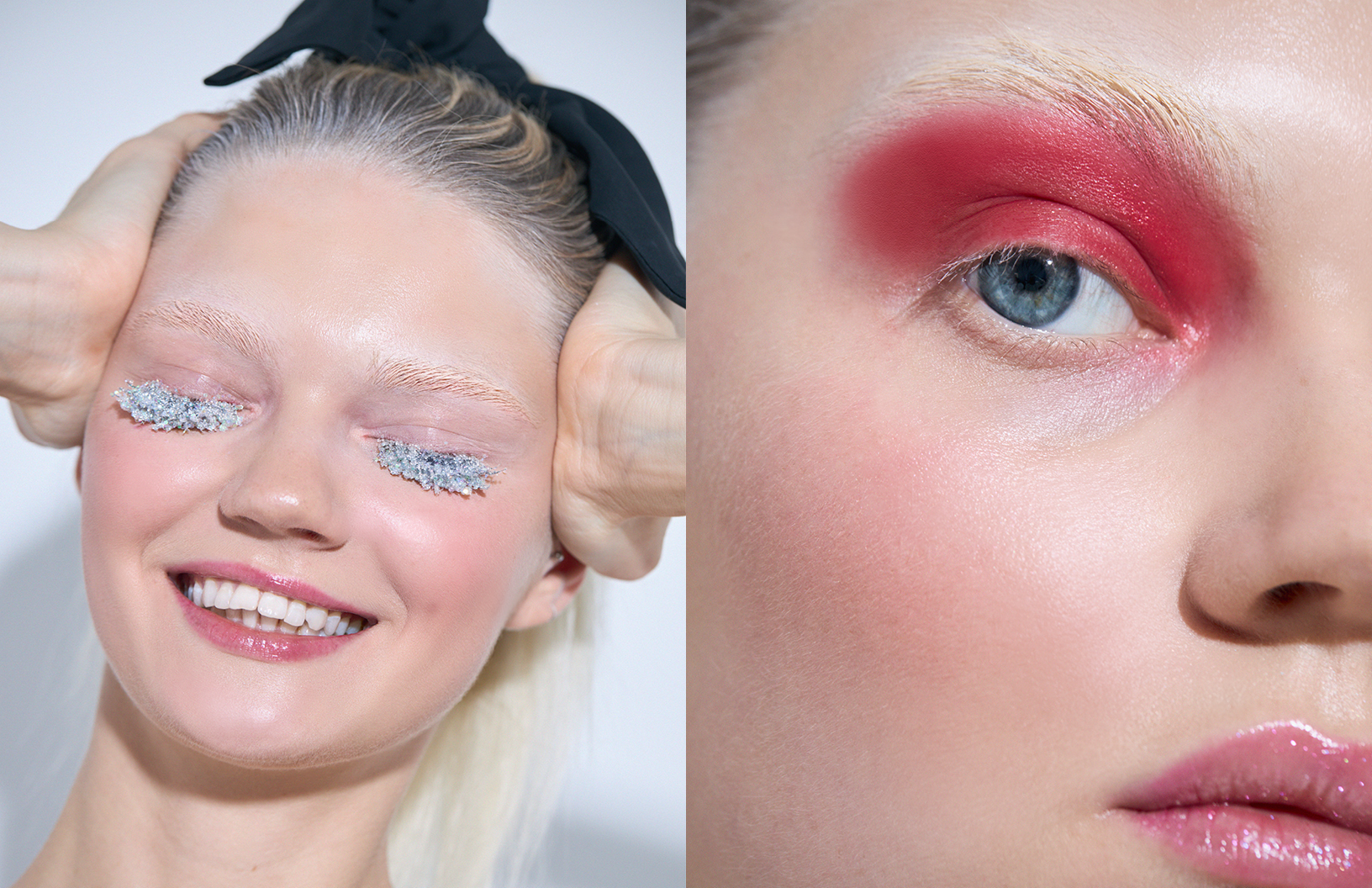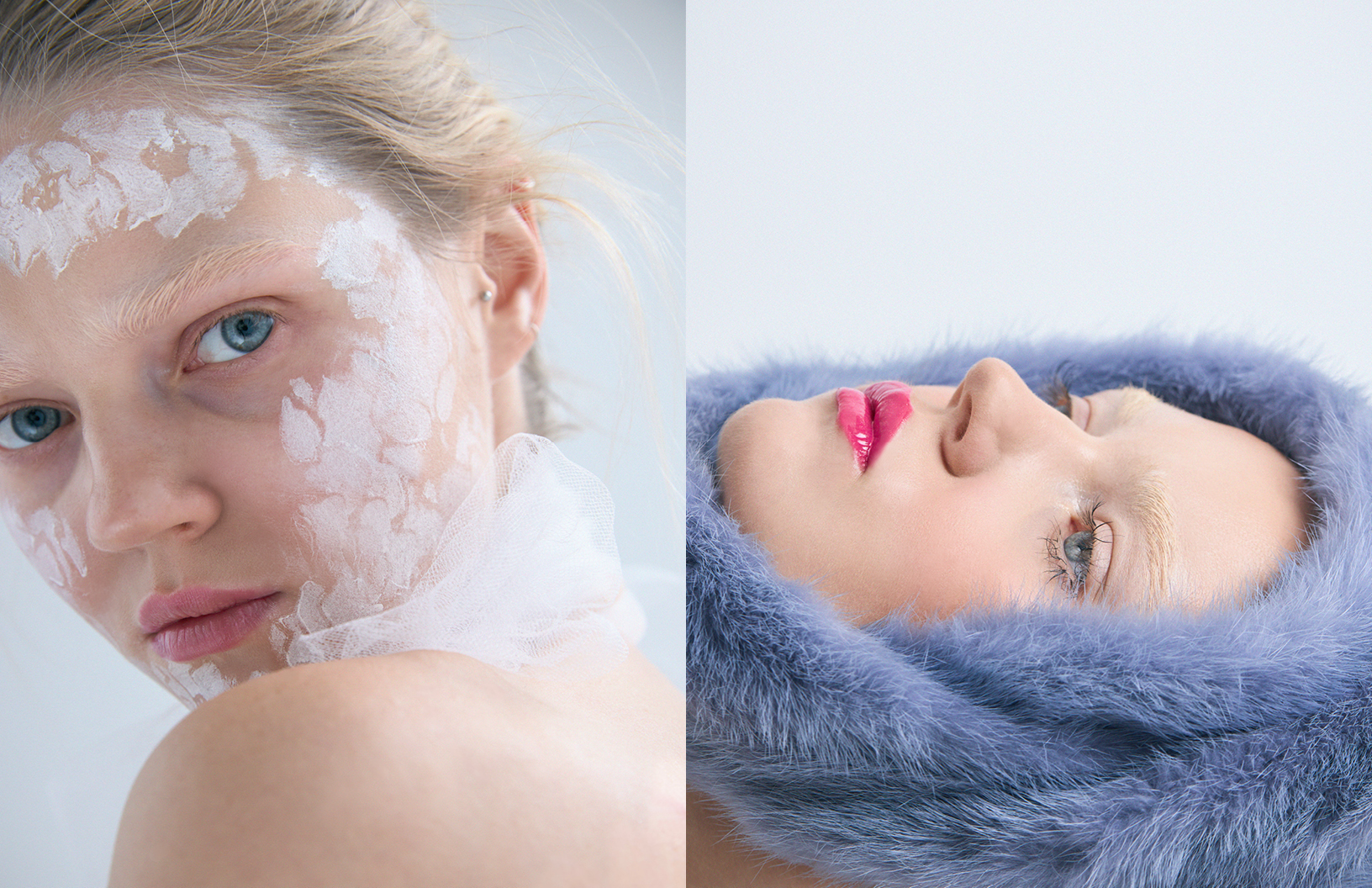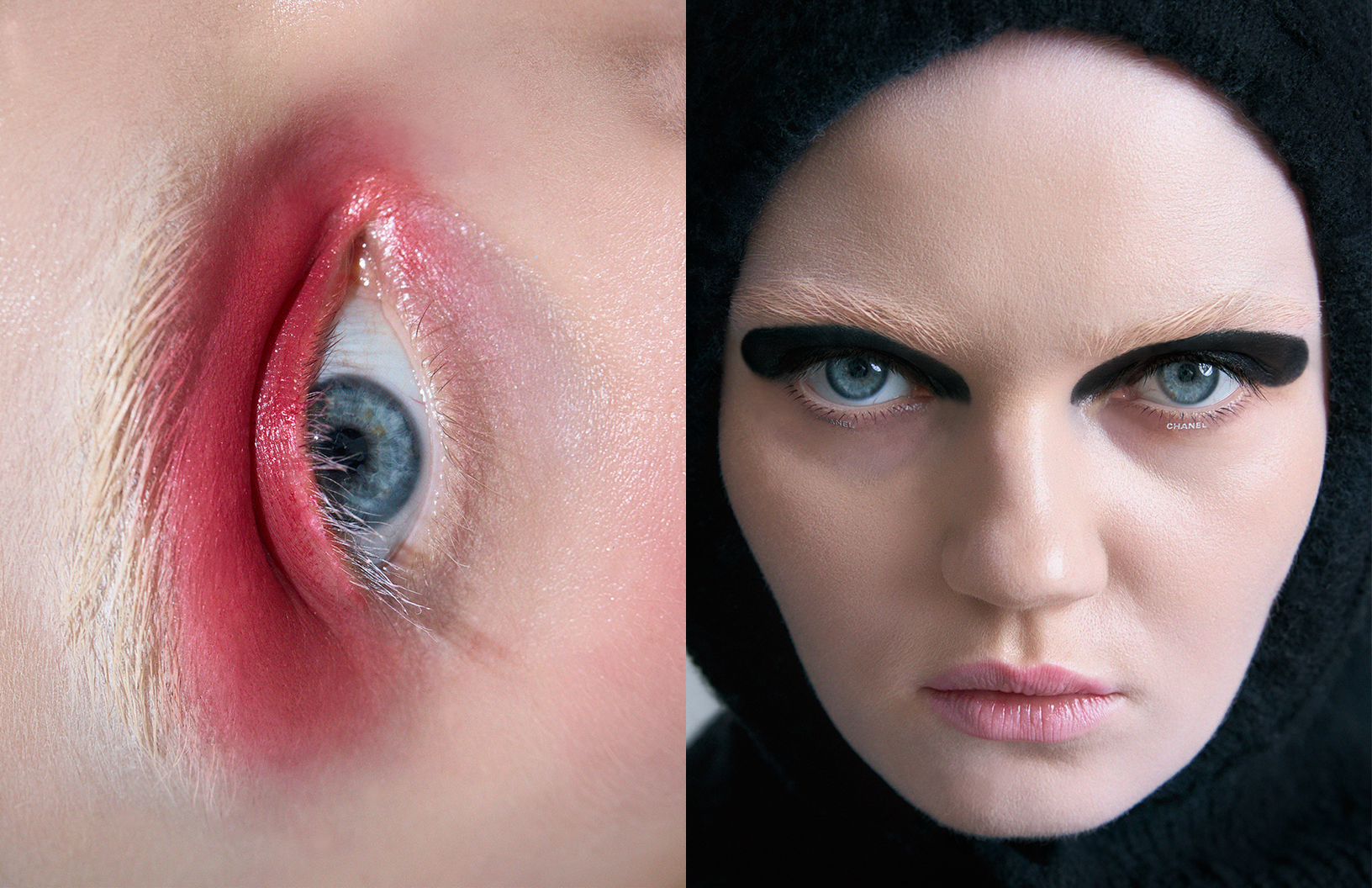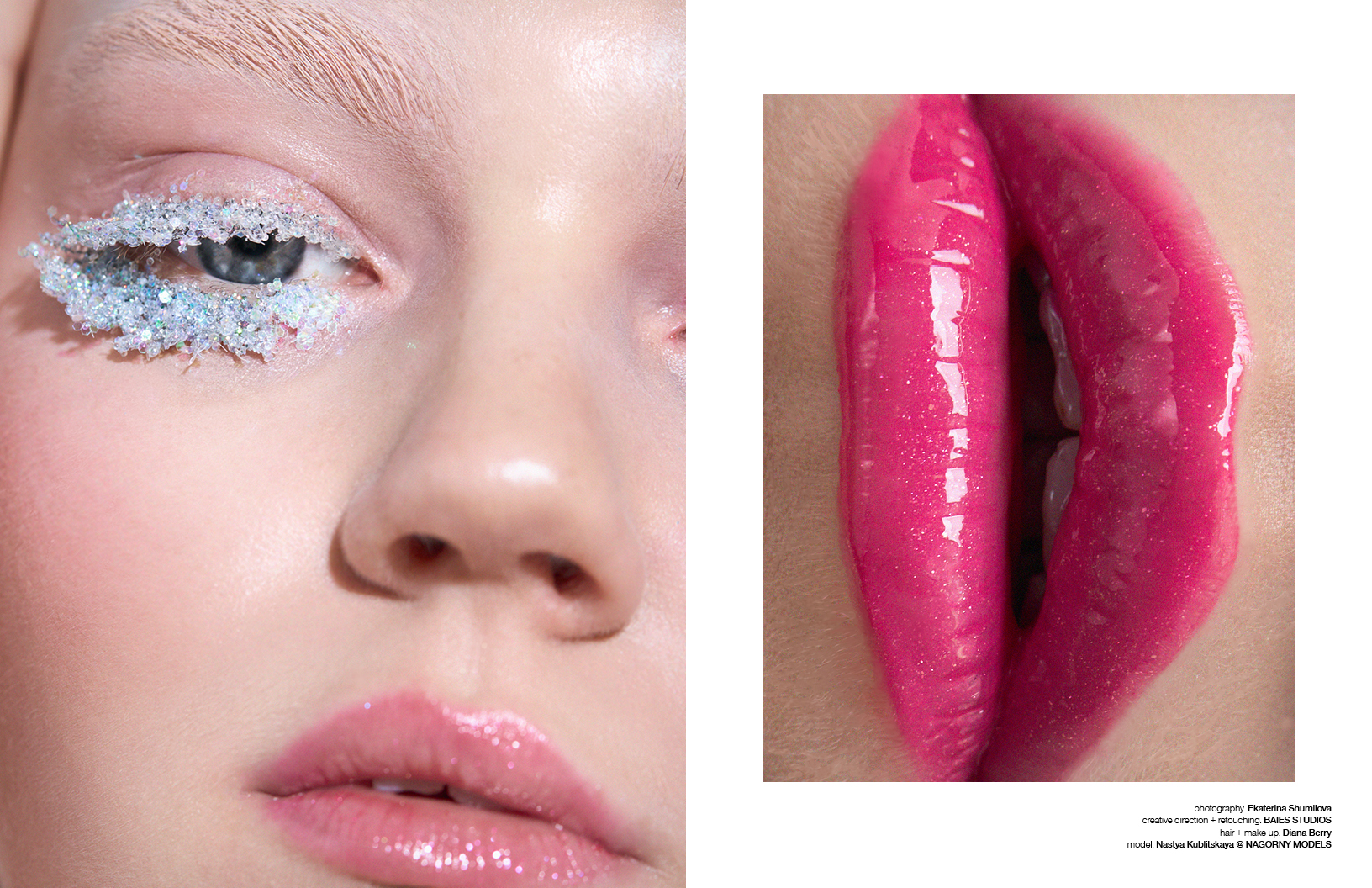
lighting. Occhio Luna scura
full look. Brioni
opposite
lighting. Occhio Coro sospeso
all clothing + shoes.
H&M Studio A/W24
tights. FALKE
To be luminous is to embody a glow that transcends the ordinary — a captivating radiance that draws others in effortlessly. It means to glimmer and gleam from the inside out regardless of how dark or muted a space might be. Despite light being intangible — untethered and unable to be grasped by force — light is seen and felt, illuminating spaces to highlight our way. For light crafters OCCHIO, redefining how we experience illumination is just the beginning of the story.
Photographed by Jonas Huckstorf under OCCHIO‘s artful glow and Viktor Ebell‘s lighting, Ida radiates in looks by Brioni, CHANEL, Christian Louboutin and more styled by Ingo Nahrwold with every garment enhanced and transformed with every cascading beam of light. Hair and make up for the editorial is by Arzu Kücük.
Discover the editorial now in Schön! 47.

lighting.
Occhio Gioia equilibrio
+ Occhio Gioia lettura
full look. Loro Piana
opposite
lighting. Occhio Mito cosmo move
all clothing. BOSS
shoes. Jimmy Choo

lighting. Occhio Gioia lettura
full look. CHANEL
opposite
lighting. Occhio Mito raggio
all clothing. Lutz Huelle
tights. saint sass
shoes. Loro Piana

lighting. Occhio Coro moon sospeso
all clothing. Vautrait
tights. saint sass
shoes. Christian Louboutin

lighting. Occhio io 3d lettura
tuxedo. N°21
tights. FALKE
shoes. Loro Piana
ring. Cartier
opposite
lighting. Occhio Luna scura
+ Occhio Luna piena
full look. Brioni

lighting. Occhio Mito cosmo move
trousers. Brunello Cucinelli
tights. FALKE
shoes. Christian Louboutin
opposite
lighting. Occhio Coro sospeso
full look. H&M Studio A/W24
Get your print copy of Schön! 47 at Amazon Globally, Amazon Germany, Amazon France, Amazon Italy, Amazon Spain, Amazon Netherlands, Amazon Poland, Amazon Belgium, Amazon Sweden and the UK Schön! store.
This Schön! 47 editorial has been produced by
photography. Jonas Huckstorf @ Lalaland Artists
art direction + fashion. Ingo Nahrwold @ Bigoudi Agency
model. Ida @ Iconic Models
casting. Ilona Catumba
hair + make up. Arzu Kücük using Byredo + ghd
lighting. Viktor Ebell
digital operator. Emil Dietrich
fashion assistant. Noah Kächelin
special thanks. The Team @ Occhio




